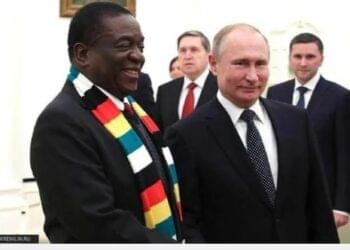CHITUNGWIZA Arts Centre chairperson Tendai Gwaravaza has described Artwell Chipiri’s spingstone carved Mwenga, The African Bride figurine as a revolutionary piece which unites families and communities.
Gwaravaza, who has throughout the year been advocating for a deeper appreciation of art and using it as a tool to attract tourists to Zimbabwe, believes that the best way to visualise the state of development of a people is to look at the adorability of a woman.
In solidarity with and appreciation of Chipiri’s Mwenga piece, Gwaravaza chipped and polished with high precision a green opal stone Female Torso. The torso does not only demand visual attention, it also provokes dialogue on the beauty of nature hidden in a raw green opal stone.
Chipiri’s creative springstone and granite works reflect dedication and perfect balance in a highly asymmetrical expressive posture as the bride in, Mwenga, The African Bride as she serves water to members of her groom’s family.
Chipiri explained the artwork saying: “Traditionally the bride is synonymous with so many things which include and are not limited to family growth through having as many children as possible. As the bride gets to know each family member, she is expected to exercise the highest level of self-control.
“The newly-married are often faced with a challenge of being treated as children and yet are supposed to demonstrate maturity through starting their own lives by building their own places and economy. Mwenga, The African Bride is meant for silent admiration to those who wish to plan and get into marriage.”
Chipiri explained that the best ideas and opportunities for changing a people’s life come with a newness similar to that brought by the bride.
“Life transcends the higher order of thinking and living when one gets something new. The bride usually comes with gifts to start life with. Her modest dressing symbolises the need for decency, dignity and respect.
“A few days after the wedding and family get together ceremonies, the bride reverts to normal life with a remarkable difference. This time around as a woman and as a family custodian. Man must respect their brides as means and ways to get to new experiences in life,” he told source.
Echoing the Mwenga, The African Bride theme Chipiri showed source a huge short bouncer carved on springstone he calls Black Power. In the piece he continues to transmit the message that despite technological advancements, humankind’s physical strength to lift and carry out duties remain a pre-requisite if progress is to take place.
“The bouncer Black Power speaks volumes on the proportion of energy and power needed to carry out duties successfully especially in these economically-stringent times. Men need to work harder to strengthen their own lives and their families.
“Therefore, it follows that, if one needs to be associated with the beauties enmeshed in the Mwenga, The African Bride, rewarding hard work has to be in place ahead of everything else,” he elucidated.
Another installation, the Unveiling Face monument, where a bride kneels down to expose her face under the guidance of an aunt, is another bone to chew for people who anticipate new things all the time.
Cheers, ululations and presentations of gifts often become the order of the day when Mwenga, The African Bride unveils her face. They say, never judge a book by its cover.
Chipiri has over the years nurtured himself to be reactive to life situations in both abstract and realism renditions situated towards the far end of the Chitungwiza Arts Centre.
Source NewsDay











